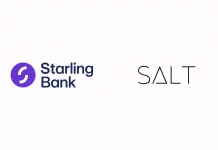The B2B FinTech landscape has never been so challenging ever before.
With the demand for speed and growth in the counters of payments, cash management, cash-flow forecasting, ERP and other digital platforms coming in, and the need for a fully integrated infrastructure as an inevitable operational necessity in today’s multi-tasking and global-reaching corporate climate, treasury desks are seriously focussing on innovative Fintech tools to address the issues.
The data movers are now realizing that come Fintech-oriented management, they shall be better able to pinpoint at what level is the company’s cash-flow position was, is, will be, and thus foretell on-course corrections and strategic moves with precision and clarity. And, that’s just one of the highlighted aspects of the improved knowhow base.
Treasury Management pundits are increasingly getting convinced that under the new paradigm, effectively envisioning better overall corporate performance and financial health with speed and accuracy shall be a major outcome.
Cloud-based technology and other modernization tools of the knowhow, contribute heavily in the management of exposure risks, trade transactions, cross-border payments, and the like which can now be monitored better by the data experts within the establishments.
Energy and commodity trading apart, other industrial verticals that attract fast-motion market fluctuations have found their going more competitive and competent within their operating methodologies, as Fintech took over much of the fast-track data streaming and on-the-minute decision-making for the monitors of the corporate financials in the sectors.
Calculating market risks, following international price movements and similar global and external factors-based management of financial outlays became easier-to-follow and steer, with the rise of the Fintech presence in the B2B segments, agrees top treasury heads in domestic and international corporations.
According to a leader Fintech support services the world over, the real challenge before corporate management in adapting more and newer tools of this technology is the complications behind linking or integrating these know-how solutions with existing infrastructure or replacing the old with new.
Yet, they well know there’s no substitute for the process. The conflict often continues until more and more treasury management skills get enhanced in the technology and the forecast of corporate health ahead come as wake-up calls to the uninitiated.
And, the earlier they respond, the better the days coming out there, for them.









